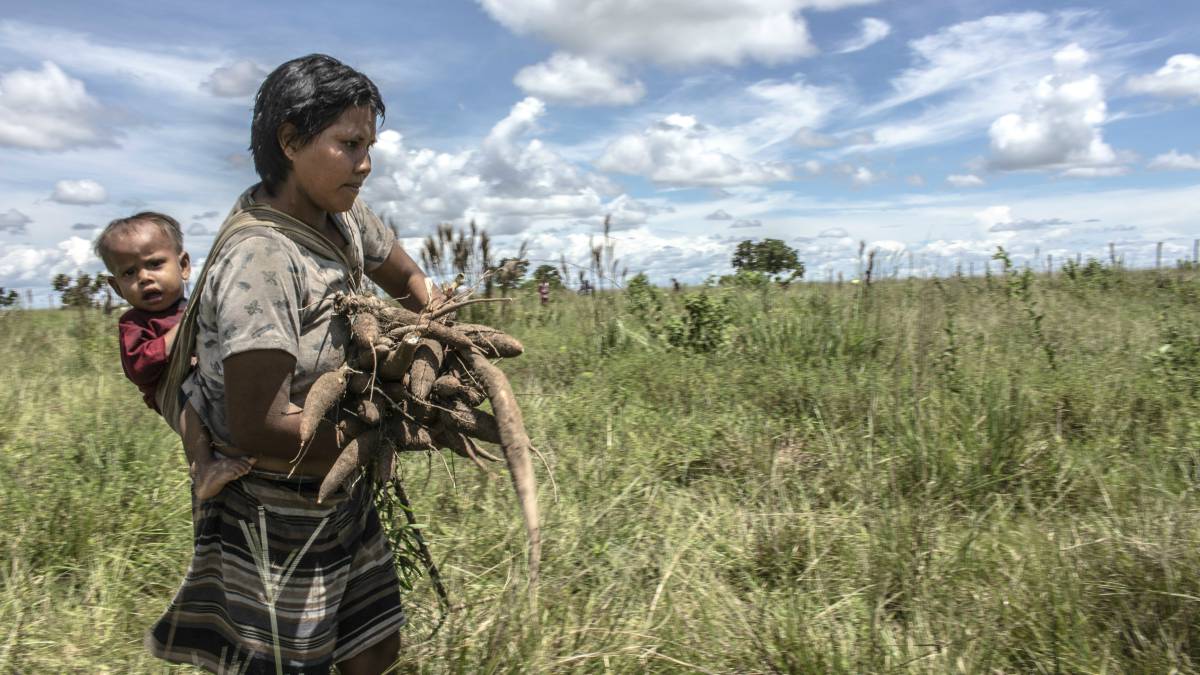Colombia: Is Access to Land Democratized?

Sub-point 1.1 of the Peace Agreement establishes mechanisms for access to land for the benefit of peasants without land or with insufficient land, mainly through land allocation processes and formalization of rights. Thus, it has been planned on the one hand, the formalization of 7 million hectares in 10 years, prioritizing areas such as those related to Development Programs with a territorial approach – PDET, in Spanish, and on the other, the allocation of 3 million hectares in the first 12 years of management of the Fondo de Tierras.
However, the implementation is moving slowly. After the first 4 years of the implementation, the National Land Agency – ANT, the entity responsible for carrying out formalization and allocation processes, reports the formalization of 1,966,691 hectares, however, it should be remembered that 1,055,000 of these lands were handed over and registered before the signing of the Peace Accord. Land formalized before the implementation of the Accord should be excluded, which reduces the deal for formalization to 913,548 hectares; the claim to inflate the figures on the achievement of compromises is obvious. Likewise, it is pointed out that this figure is very low in comparison with the pace of implementation needed to achieve the goal set out in the Accord: nearly 700,000 hectares are expected to be formalized annually.
65.2% of the beneficiaries of formalization processes are men and 31.6% are women. It is also interesting to note that the 93.3% of formalized land corresponds to collective titles of black communities and constitution / expansion of indigenous reserves, similarly, only 14% of formalized hectares are in municipalities focused on the implementation of the Agreement.
Regarding the allocation process, the National Land Agency (ANT) presents the entry of about a million hectares to the Fondo de Tierras, however, if the hectares available to be distributed were strictly counted, in which the allocation condition has no restrictions or they are determined, this figure would be reduced to 90%, given that only 2,253 available plots corresponding to 96,471.1 hectares fulfill this condition1. This accentuates, again, the government’s pretention to inflate the figures for the fulfillment with the Agreement, given that only the entry [in the database] of the available land to be handed over to the peasants without land, in other words, the Fondo de Tierras actually has 96,471.1 hectares.
Likewise, the government is accounting for sources of vacant land and the Fondo Nacional Agrario, the land that is available for distribution, however, these are vacant lands with a previous occupation, which cannot be allocated and on which processes formalization of rights must be executed. In other words, these are cases where the formalization of the property is a must and that can feed the results of the formalization of seven million hectares goal, but this does not represent an accomplishment of the compromise to hand over land.
The Office of the Inspector General reports that 8,143.7 hectares have been allocated. It is important to stress that this figure corresponds to direct purchases and full allocations, that is, there were no allocations without previous occupation. Likewise, the regulatory body indicates that only 6.6% of hectares allocated by direct purchase correspond to municipalities prioritized in the implementation of the Agreement.
However, if we consider the figures presented by the ANT in relation to the Fondo de Tierras – in which the condition of land allocation is not considered – there is a 52.2% of the hectares put into the Fondo where the municipalities prioritized by the Territorially Focused Development Plans – PDET, and the 47.8% in non-priority areas. Likewise, 8 out of 16 PDET sub-regions2 each register less than 1% of the hectares included in the Fondo de Tierras.
As it is seen, the government is inflating the figures of the fulfillment of point 1 of the Agreement and there is no progress in democratizing access to land in the country. Additionally, the actions carried out by the government are not focused on the areas prioritized for its implementation, such as the PDET municipalities, which disregards the principle of prioritization established in the Agreement.
1 Office of the Inspector General of Colombia (2021).Informe sobre el estado de avance de la implementación de las estrategias de acceso a tierras y uso del suelo rural contempladas en el acuerdo de paz.
2 The 8 sub-regions mentioned are: Catatumbo, Pacífico Medio, South of Tolima, Chocó, Putumayo, Pacific and frontier of Nariño, Caguán Basin y Caqueteño Foothill, South of Córdoba
